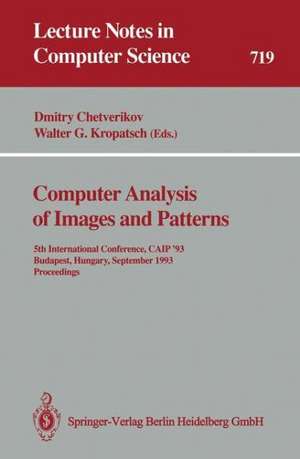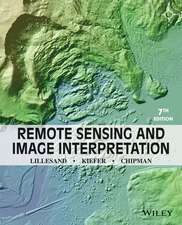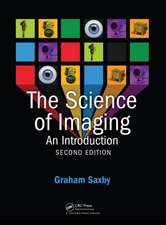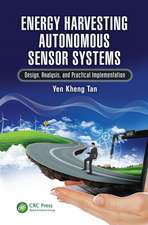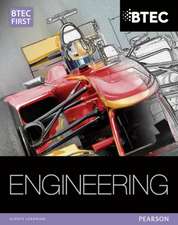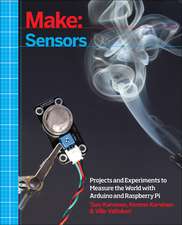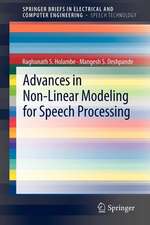Computer Analysis of Images and Patterns: 5th International Conference, CAIP ’93 Budapest, Hungary, September 13–15, 1993 Proceedings: Lecture Notes in Computer Science, cartea 719
Editat de Dmitry Chetverikov, Walter Kropatschen Limba Engleză Paperback – 30 aug 1993
Din seria Lecture Notes in Computer Science
- 20%
 Preț: 1061.55 lei
Preț: 1061.55 lei - 20%
 Preț: 307.71 lei
Preț: 307.71 lei - 20%
 Preț: 438.69 lei
Preț: 438.69 lei - 20%
 Preț: 579.30 lei
Preț: 579.30 lei -
 Preț: 410.88 lei
Preț: 410.88 lei - 17%
 Preț: 427.22 lei
Preț: 427.22 lei - 20%
 Preț: 596.46 lei
Preț: 596.46 lei - 15%
 Preț: 448.04 lei
Preț: 448.04 lei - 20%
 Preț: 353.50 lei
Preț: 353.50 lei -
 Preț: 389.49 lei
Preț: 389.49 lei - 20%
 Preț: 309.90 lei
Preț: 309.90 lei - 20%
 Preț: 645.28 lei
Preț: 645.28 lei - 20%
 Preț: 763.23 lei
Preț: 763.23 lei - 15%
 Preț: 580.46 lei
Preț: 580.46 lei - 20%
 Preț: 310.28 lei
Preț: 310.28 lei - 20%
 Preț: 655.02 lei
Preț: 655.02 lei - 20%
 Preț: 1183.14 lei
Preț: 1183.14 lei - 20%
 Preț: 340.32 lei
Preț: 340.32 lei -
 Preț: 449.57 lei
Preț: 449.57 lei - 20%
 Preț: 591.51 lei
Preț: 591.51 lei - 18%
 Preț: 938.83 lei
Preț: 938.83 lei - 20%
 Preț: 337.00 lei
Preț: 337.00 lei - 20%
 Preț: 649.50 lei
Preț: 649.50 lei - 20%
 Preț: 607.40 lei
Preț: 607.40 lei - 20%
 Preț: 1414.79 lei
Preț: 1414.79 lei - 20%
 Preț: 1024.44 lei
Preț: 1024.44 lei - 20%
 Preț: 583.40 lei
Preț: 583.40 lei - 20%
 Preț: 453.32 lei
Preț: 453.32 lei - 20%
 Preț: 575.49 lei
Preț: 575.49 lei - 20%
 Preț: 1075.26 lei
Preț: 1075.26 lei - 20%
 Preț: 585.88 lei
Preț: 585.88 lei - 20%
 Preț: 825.93 lei
Preț: 825.93 lei - 17%
 Preț: 360.20 lei
Preț: 360.20 lei - 20%
 Preț: 763.23 lei
Preț: 763.23 lei - 20%
 Preț: 340.32 lei
Preț: 340.32 lei - 20%
 Preț: 504.58 lei
Preț: 504.58 lei - 20%
 Preț: 369.13 lei
Preț: 369.13 lei - 20%
 Preț: 580.93 lei
Preț: 580.93 lei - 20%
 Preț: 343.62 lei
Preț: 343.62 lei - 20%
 Preț: 350.21 lei
Preț: 350.21 lei - 20%
 Preț: 583.40 lei
Preț: 583.40 lei - 20%
 Preț: 583.40 lei
Preț: 583.40 lei - 15%
 Preț: 438.59 lei
Preț: 438.59 lei - 20%
 Preț: 341.95 lei
Preț: 341.95 lei - 20%
 Preț: 238.01 lei
Preț: 238.01 lei - 20%
 Preț: 538.30 lei
Preț: 538.30 lei
Preț: 422.04 lei
Nou
Puncte Express: 633
Preț estimativ în valută:
80.78€ • 87.78$ • 67.90£
80.78€ • 87.78$ • 67.90£
Carte tipărită la comandă
Livrare economică 21 aprilie-05 mai
Preluare comenzi: 021 569.72.76
Specificații
ISBN-13: 9783540572336
ISBN-10: 3540572333
Pagini: 873
Ilustrații: XVI, 860 p.
Dimensiuni: 155 x 235 x 28 mm
Greutate: 1.22 kg
Ediția:1993
Editura: Springer Berlin, Heidelberg
Colecția Springer
Seria Lecture Notes in Computer Science
Locul publicării:Berlin, Heidelberg, Germany
ISBN-10: 3540572333
Pagini: 873
Ilustrații: XVI, 860 p.
Dimensiuni: 155 x 235 x 28 mm
Greutate: 1.22 kg
Ediția:1993
Editura: Springer Berlin, Heidelberg
Colecția Springer
Seria Lecture Notes in Computer Science
Locul publicării:Berlin, Heidelberg, Germany
Public țintă
ResearchCuprins
Performance characterization in computer vision.- Low-level computational mono and stereo vision: A Bayesian approach.- Topographic structure of image.- The dual irregular pyramid.- Analytical results on the Quadtree storage-requirements.- From pyramids to quadtrees: Approximation of heterogeneous surfaces by fixing complexity.- Calculation and estimation of sample statistics of binary images using quadtree data representations.- Temporal speckle reduction for feature extraction in ultrasound images.- Noise effects in statistical subpixel pattern recognition.- Fast iterative reconstruction of band-limited images from non-uniform sampling values.- Anisotropic filtering of MRI data based upon image gradient histogram.- Fast discrete cosine transform approximation for JPEG image compression.- Error diffusion in Block Truncation Coding.- On a bound on signal-to-noise ratio in subband coding of Gaussian image process.- A linear predictor as a regularization function in adaptive image restoration and reconstruction.- Inversion of convolution by small kernels.- A model-based image quantization technique for supervised image recognition.- Brightness-contrast diffusion and the grouping of missing angles.- Rotation invariance in edge detection.- Using eigenvectors of a vector field for deriving a second directional derivative operator for color images.- Crest lines detection in grey level images: Studies of different approaches and proposition of a new one.- Contour — Detection using the shape of the nearest neighbors Set (NN-Set).- A comparative study of performance for noisy roof edge detection.- A Hough-like prediction/correction approach for ellipse detection.- Fourier parameterization provide uniform bounded Hough Space.- Motion estimation and the Randomized HoughTransform (RHT): New methods with gradient information.- Circle extraction via least squares and the Kalman filter.- A multiresolution shape description algorithm.- Image coding by morphological skeleton transformation.- A non-linear shape abstraction technique.- Minimum-space time-optimal convex hull algorithms (preliminary report).- Detecting corners of polygonal and polyhedral objects.- A fast algorithm for dominant point detection on chain-coded contours.- Shapes and metrics.- Simplified technique of structure extraction from textural images.- Adaptive pyramid approach to texture segmentation.- Markov random fields with short- and long-range interaction for modelling gray-scale textured images.- Texture recognition by the q-th order fractal analysis.- A proximity measure of line drawings for comparison of chemical compounds.- Jigsaw puzzle solving using approximate string matching and best-first search.- A morphological approach to the generalised 2-stage stock-cutting problem.- Primitive and compound patterns.- A similarity measure between 3-D objects and its parallel computation.- Automated learning of rules using genetic operators.- Symbolic and iconic information combination for satellite imagery interpretation.- Multi-class classification and symbolic cognitive processing with ALISA.- Computing image flow using a coarse-to-fine strategy for spatiotemporal filters.- Visual motion estimation from image contour tracking.- Robust recovery of ego-motion.- A temporal smoothing technique for real-time motion detection.- Combined evaluation of motion and disparity vector fields for stereoscopic sequence coding.- Recovering translational motion parameters from image sequences using Randomized Hough Transform.- Estimating optical flow for large interframe displacements.- Surface discontinuities in range images.- Algorithms for shape from shading, lighting direction and motion.- Separating diffuse and specular component of image irradiance by translating a camera.- Necessary and sufficient conditions for a unique solution of plane motion and structure.- Photometric stereo for non-lambertian surfaces using color information.- Active fixation for junction classification.- Point matching for registration of free-form surfaces.- Temporal precedence in asynchronous visual indexing.- Improved stripe matching for colour encoded structured light.- Fusion of the stereoscopic and temporal matching results by an algorithm of coherence control and conflicts management.- 3D Model based stereo reconstruction using coupled Markov random fields.- Occlusions and special views within the reconstruction of polyhedral scenes.- Fast shadowing of volume data.- Three dimensional moment invariants under rigid transformation.- Parameterisation of simple geometrical lambertian surfaces using photometric stereo.- Hough transform to extract 3D information from images of different viewpoints.- Fast algorithm for the stereo pair matching with parallel computation.- Dense stereo correspondence using polychromatic block matching.- Planning the next view using the max-min principle.- Cross-correlation with reconstruction: A new approach to pattern matching.- The iterated normalized backprojection method of image reconstruction.- Cone beam reconstruction and fourier transform of distributions.- Character recognition by affine moment invariants.- Ultra fast pattern classification by fuzzy logic.- An object-oriented pen-based recognizer for handprinted characters.- On the method of critical points in character recognition.- Printed text segmentation using distance transform.- Recognition of handwritten layout drawings.- Automatic recognition of scanned technical drawings.- Digital image processing in radiology: An experience of development of technology for computer-aided diagnosis.- Modeling and quantification of protein maps by Gaussian fitting.- Computer analysis of the large intestine contours for the recognition of diseases.- A rule-based approach to hand X-ray image segmentation.- 3-D cerebral vessel reconstruction from angiograms.- Comparison of different approaches to suppress speckles in ultrasonic tomograms.- A test-bed for computer-assisted fusion of multi-modality medical images.- Object-oriented volume segmentation.- Smooth morphological transformation of CT and MR medical data.- Evaluation of plaque formation — Surface reflectance measurement.- Analysis of MR angiography volume data leading to the structural description of the cerebral vessel tree.- The automatic classification of normal and abnormal chromosomes using image analysis.- Real time image processing for fast seam tracking.- An experimental vision tool for real time quality control.- High-tech approaches of computer vision in industry.- An image processing system for material flow control in coal mining industry.- Transparency quantification. Application to composite materials quality controls by image processing.- Control of composite material strucrure by fractal methods.- Model-based adaptive preprocessing of images in automatic visual inspection.- Application of knowledge-based image inspection system for diagnosis of misprints in offsetprinting.- Multiple image matching in an automatic aerotriangulation system.- Digital processing of skylab X-ray images of the solar corona..- Finding human faces in a picture.- CADI: Computer assisted educational packagefor digital image processing.- Computer image analysis to locate targets for an agricultural robot.- The application of digital image processing in the evaluation of agricultural experiments.- GCV-Aided linear image regularization for the reconstruction of wave distribution function of magnetospheric VLF/ELF waves.- Crater detection in aero-space imagery using simple nonparametric statistical tests.- Digital retina simulating dynamic behavior of visual perception.- A new heterogeneous and reconfigurable architecture for image analysis.- The analogic single-chip CNN visual supercomputer — a review.- A variant of learning vector quantizer based on split-merge statistical tests.- Neural networks classifiers based on geocoded data and multispectral images for satellite image interpretation.- Artificial neural networks for image improvement.- Using Cellular Neural Network to “See” random-dot stereograms.
